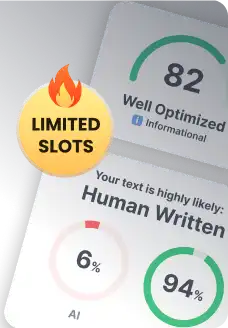While both fall under the umbrella of artificial intelligence (AI), the core difference between AI and generative AI is that traditional AI focuses on analyzing existing data to generate predictions or recommendations, whereas generative AI is designed to create new content, such as text, images, or code, from the data it has learned.
This distinction highlights a shift from simply understanding and reacting to data, to actively creating something new.
However, the line between these two can blur. For instance, some AI systems might use generative techniques as part of a larger predictive process, or to generate synthetic data for training other AI models. The key nuance is that generative AI emphasizes the creation of novel outputs, whereas traditional AI prioritizes analysis and decision-making based on existing information.
Key Takeaways
- While traditional AI was largely focused on automating specific tasks based on rules and algorithms. Generative AI can be a powerful tool for producing new content by identifying and synthesizing patterns within massive datasets. Recognizing their unique goals is key to selecting the best-fit technology for your desired outcomes.
- Traditional AI is better for applications that need transparency, interpretability, and real-time performance, like predictive analytics and business automation. Generative AI is a boon to creative sectors, creating original works such as text, images, and videos.
- Generative AI relies on advanced models like GANs and Transformers, requiring extensive data and computational power. Traditional AI employs simpler, task-specific algorithms like decision trees and logistic regression. This allows Traditional AI to be more effective in highly structured scenarios.
- Ethical concerns for Generative AI and adaptability problems for Traditional AI are just two of the challenges both AI types currently battle. Instrumentation, access, and equity These limitations highlight the need for ongoing innovation, disciplined development, and cross-industry collaboration.
- The future of AI is looking good, though! It will prosperably advance when Traditional AI and Generative AI join forces, bringing their complementary abilities together to solve mind-bending problems. Federal investment in hardware, software, and interdisciplinary research will power this evolution forward, paving the way for groundbreaking solutions.
- Follow along as we track new AI developments and learn how to use them to the greatest effect. This understanding will enable you to align AI capabilities to your specific business or creative objectives.
What is Traditional AI?
Traditional AI, or weak AI, is about doing narrow tasks. It does this by recreating human intelligence in an artificial way, using algorithmic processes. Unlike generative AI, which thrives on creativity and autonomous outputs, Traditional AI focuses on optimizing efficiency and accuracy in well-defined tasks.
Whether it fails or succeeds depends on the quality of the data it processes. Thus, the need for structured and relevant datasets to help systems perform at their best is crucial.
Characteristics of Traditional AI
Traditional AI systems are by design task-specific, created to tackle narrowly defined problems. They are based on algorithmic approaches, for example, decision-making trees or classification trees, and usually work with datasets that are much smaller in scope.
These systems follow predetermined rules, ensuring transparency and interpretability in their decisions, which is often crucial in industries like finance. Traditional AI is less computationally intensive, which is one reason it’s ideally suited for real-time applications, including fraud detection in banking and customer service chatbots.
How Traditional AI Works
It starts with data input. The first step of the process is layering structured data onto the map. With this, algorithms can analyze the data to produce very accurate results, including predicting customer favorites or identifying fraud.
Machine learning adds a powerful dynamic to these systems by enabling them to improve performance based on past patterns. Unlike traditional AI, which runs within strict human-defined parameters that provide tight control over the scope of the task, feedback loops allow for iterative improvement.
Common Algorithms in Traditional AI
- Decision Trees: Used in medical diagnoses or loan approvals.
- Logistic Regression: Ideal for binary outcomes, like spam detection.
- Support Vector Machines: Effective in image recognition tasks.
Each algorithm weighs strengths in simplicity and interpretability against corresponding limitations in complexity or scalability.
What is Generative AI?
Generative AI represents a specialized subset of artificial intelligence focused on creating new and original content by learning from existing data. Generative AI distinguishes itself from conventional AI by going off-script. Rather, it draws on massive amounts of data and sophisticated modeling to produce creative results, from text to images to music and even video.
This method gives it space to shift and make new, answering the increasing call for hyper-specific, high-quality work.
Characteristics of Generative AI
Generative AI’s potential comes from complex architectures (often neural networks) that allow such tools to create outputs that are diverse and original. It relies on massive datasets and complicated algorithms to spot patterns. This allows it to produce content that seems personal and unique.
One of its greatest strengths is its flexibility. It can be used to automate a range of creative tasks in various industries, from creating lifelike visuals for design workflows to producing customized advertising content. Yet perhaps no tool is as game-changing as generative AI.
Above all, it’s one of the engines of innovation and creativity, redefining customer experiences across industries, including entertainment, advertising, and e-commerce.
How Generative AI Works
Generative AI – like an artist – starts with data ingestion, as it analyzes large datasets to identify different patterns. Neural networks, particularly those using deep learning algorithms, are key to sharpening these powers. By training models iteratively, they become more advanced, creating more accurate and complex content.
Generative AI studies from various datasets to improve flexibility and responsiveness. That’s because it can generate Photoshop-level imagery and make artful long-form copy that’s customized to fit a given project’s requirements.
Common Models in Generative AI
- Great for generating hyperrealistic imagery and video through a process of competition between two neural networks.
- VAEs (Variational Autoencoders): An AI model primarily trained on smooth content generation typically applied to tasks such as image inpainting.
- Transformers: Powerhouses for text and language generation, driving tools like ChatGPT for natural and coherent communication.
Each of these models has its own distinct benefits. Obstacles like expensive computation requirements and intricate model training underscore the importance of strategic model selection to obtain optimal outcomes.
AI Versus Generative AI: Key Differences
To clarify the distinction between AI and generative AI, it’s essential to understand their core functions. Traditional AI focuses on analyzing existing data to derive insights, make predictions, or offer recommendations. This type of AI excels at tasks like identifying patterns, classifying information, and automating processes based on pre-defined rules.
Think of applications like spam filters, recommendation systems on streaming platforms, or AI used in financial forecasting. These systems operate within established parameters, aiming to optimize efficiency and accuracy.
In contrast, generative AI takes a creative approach. Instead of merely analyzing data, it learns the underlying patterns and structures to generate entirely new content. This content can manifest in various forms, including text, images, music, or even code.
Generative AI systems, such as those powering chatbots like ChatGPT or image generators like DALL-E, create outputs that are original, though derived from the data they were trained on. This ability to produce novel content distinguishes generative AI from its traditional counterpart, opening up new possibilities in fields like art, design, and content creation.
So in short, regular AI analyses data, and generative AI creates new data.
Traditional AI Applications
Want to try SurgeGraph for free?

Generate 20 documents

SEO tools (Auto Optimizer, Internal Linking, and more)

No credit card required
Traditional AI, based on leveraging historical data, has been the foundation of transformative innovations across multiple sectors. Unlike generative AI—that creates content, ideas, or solutions—traditional AI is much better served at predicting or classifying things. This is what makes traditional AI so invaluable in structured settings.
Its use cases are truly transformative across industries. From healthcare to finance to manufacturing, AI is improving productivity and helping us make better decisions.
Business Automation Examples
Traditional AI helps businesses run more efficiently by taking care of repetitive, mundane tasks automatically. This saves human labor while increasing precision and consistency.
For example, customer service chatbots quickly answer customer questions, allowing human agents to focus on tougher problems. Supply Chain Management AI enhances inventory management and streamlines logistics processes, guaranteeing faster deliveries.
HR departments have greatly benefited from AI-powered tools that screen resumes and schedule interviews at lightning speeds, thus expediting recruitment processes. These traditional implementations lead to significant savings in both time and money without the potential for human error.
Predictive Maintenance Use Cases
Industries like manufacturing and transportation use traditional AI to predict when machines will need maintenance. By tracking and analyzing equipment performance, AI systems can predict when a piece of equipment is likely to fail, minimizing unplanned downtime.
In one case, factory machinery stocked with AI sensors now alerts operators of a potential breakdown ahead of time, avoiding expensive repair fees. Predictive data analysis pinpoints and refines those maintenance schedules, making sure that operational continuity is maintained.
Cybersecurity Applications
In the realm of cybersecurity, traditional AI improves threat detection by leveraging anomaly detection and intrusion prevention systems. Surveillance in real-time targets possibly illegal behavior so enforcement agencies can respond immediately to threats and avoid losses from breaches.
By constantly learning, we can outpace emerging threats, protecting this nation’s most vital systems more effectively and securely.
Financial Planning Applications
Traditional AI underpins financial strategies, helping to measure risks and maximize return on investment through portfolio optimization. Predictive analytics improves forecasting accuracy, empowering better investment decisions.
Additional security is provided by banks utilizing AI for fraud detection.
Generative AI Applications
Generative AI has the potential to disrupt multiple industries by automating creative processes and improving the personalization of content. New tools such as ChatGPT, Microsoft Copilot, and DALL-E are developed using large language models (LLMs), trained on vast datasets. They create novel and creative works and offer automated, real-world applications across industries from entertainment to advertising to gaming and coding.
Over three-quarters of respondents in a McKinsey survey forecast significant industry transformations within three years, driven by generative AI’s capabilities.
Content Creation and Personalization
Generative AI transforms the content creation landscape by streamlining the writing and design processes. It makes it possible to create written, social, and video content 10 times faster. In marketing, it creates hyper-personalized advertisements, and in entertainment, it develops scripts or storyboards.
Tools such as ChatGPT leverage data of all user interactions to continually personalize experiences, providing valuable and meaningful experiences that keep users engaged. For example, a social media campaign could leverage AI to create captivating posts tailored to their audience’s preferences. This homegrown approach increases user adoption and happiness by orders of magnitude.
Product Design and Development
Generative AI is becoming a turning point for industries from fashion to automotive as it creates prototypes and tests concepts at lightning speed. Designers employ AI to quickly explore variations to guide the refinement of a product before launch.
In consumer electronics, AI promotes teamwork by providing data-driven insights that align teams across departments, accelerating decision-making and driving innovation.
Software Development Assistance
Generative AI improves coding productivity by speeding up these tasks through automating code generation, debugging, etc. Increased developer productivity as they leverage AI-powered testing and optimization tools.
By doing so, it encourages collaboration, with team members working together to solve problems, speeding up development schedules.
Customer Support Enhancement
Generative AI enhances customer service by powering 24/7 chatbots and virtual assistants, providing customers with instant, personalized responses at any time. This increases user satisfaction and loyalty, since users are getting customized answers to their questions.
Limitations and Challenges
AI—traditional or generative—provides transformational opportunities but traditional and generative AI both have natural limitations that detract from their efficacy. Though this can rapidly create beautiful models, traditional AI fails under dynamic, undefined scenarios where adaptability is key.
Generative AI is an impressive display of creativity. Despite its many flaws, it has prompted critical conversations on ethical use, quality control, and fairness of its outputs. These limitations and challenges must be addressed to ensure AI is adopted responsibly and effectively.
Generative AI’s Drawbacks
Generative AI, with its ability to create all new original material, isn’t without its limitations. Ethical concerns stemming from misuse, like creating fake news or deepfakes, are just the tip of the iceberg.
Quality control of outputs can be hit or miss, with outputs sometimes looking perfect (>100% accuracy) but other times looking unfeasible or erroneous. Bias in training data complicates the issue even more. These generative models can perpetuate real-world biases, resulting in discriminatory and unjust outputs.
Responsible development, such as bias audits and the adoption of ethically responsible AI development guidelines, is essential to mitigate these risks.
Traditional AI’s Constraints
Want to try SurgeGraph for free?

Generate 20 documents

SEO tools (Auto Optimizer, Internal Linking, and more)

No credit card required
Traditional AI has always struggled to perform tasks beyond its initial coded parameters. Real-world, complicated, ever-shifting situations reveal its inflexibility, revealing the imperative for ongoing development and creative thinking.
For example, preparing conventional AI for unexpected obstacles on the road still poses a major challenge to AVs. These limitations can limit its overall impact, needing frequent revisions to remain pertinent.
Overcoming Technical Hurdles
Technical barriers, such as high energy demands and a lack of a skilled workforce, stunt AI scalability. Training these large models takes an incredible amount of energy, with one recent study comparing the emissions created to that of five cars over their lifetimes.
Making smart investments in green infrastructure, supporting collaborative action, and ensuring that cutting-edge research is efficient and effective are key to ensuring lasting progress.
- Human cost The liabilities of high energy consumption are more than financial. Limitations and challenges 1. Bias in data sets Ethical misuse risks of AI. Expanded Scalability challenges ⌄ Inherent challenges.
Future Trends and Outlook
The rapid advancement of artificial intelligence (AI) has been a significant force in transforming industries and reimagining what’s possible. Looking forward, Traditional AI is poised to create profound innovations. Generative AI will be a defining force in the future not just for transportation. This subsection examines the trends, convergence, and advancements that will shape the future of AI.
Convergence or Divergence of AI Types
This intersection between Traditional AI’s analytical decision-making and Generative AI’s creative capabilities is at the heart of future advancements. By merging the strengths of these two powerful methodologies, we can make AI systems that forecast complex outcomes.
These systems will create more thoughtful solutions. In the field of healthcare, a blended approach could improve diagnostics as well as formulate more personalized treatments.
Combining these technologies creates hurdles, including aligning training data and ensuring compatible frameworks. Deep interdisciplinary collaboration between technologists, data scientists, and domain experts will continue to be key to addressing these significant hurdles while leveraging opportunities.
Hardware and Software Advancements
Enhancements in hardware, including the development of AI-specific processors, increase the efficiency of computing, making it possible to perform more complex computations more quickly.
Simultaneously, software innovations are working to fine-tune algorithms to better process these massive datasets. Major investments in infrastructure, such as cloud-based AI platforms, create opportunities for industries to scale adoption.
For instance, the finance sector uses these advancements to instantly detect fraud, and smart homes enjoy more efficient automation thanks to intelligent systems.
Impact of AI Research on Both
With continued research, overcoming these ethical and technical hurdles will pave the way for exciting new applications to emerge. Positive industry-led initiatives, like energy-efficient AI research and development, represent a real step toward helping the world develop sustainably.
Through its applications in education, research also drives the development of adaptive learning platforms that better serve a variety of students’ needs.
Key Future Trends in AI
- The synergy between Traditional AI and Generative AI driving advancements
- Increased focus on energy-efficient AI practices by 2026
- Generative AI revolutionizing industries like finance and education
- Agentic AI systems taking over complex workflows and smart work/living environments climate by 2034
- Economic growth potential of generative AI across industries
Frequently Asked Questions
What is traditional AI?
Traditional AI describes systems that are primarily built to analyze data, identify patterns, and make decisions based on programmed rules. It’s much more about being narrowly and efficiently task-oriented, like fraud detection or recommendation systems.
What is generative AI?
Unlike traditional AI, which analyzes data, generative AI produces original material — whether that’s text, imagery, or even music — by recognizing patterns from extensive databases. It draws on incredible generative AI models such as GPT and DALL-E to create original works.
How does traditional AI differ from generative AI?
Traditional AI primarily supports decision-making and prediction, while generative AI primarily excels at creating new content. Generative AI has introduced new levels of creativity into AI capabilities, opening up uses beyond traditional approaches focused on solving specific problems.
What are some applications of traditional AI?
Things we use AI for today like fraud detection, supply chain optimization, customer support chatbots, and even medical diagnostics. Unlike generative AI, it is great at looking at very large datasets and driving rule-based conclusions.
What are examples of generative AI applications?
Generative AI underlies popular tools such as ChatGPT for large language model text generation, DALL-E for image creation, and AI music composers. Beyond higher education, generative AI is transforming the video production and gaming industries and advancing personalized content creation.
What are the key challenges of generative AI?
Generative AI presents challenges, including data bias, ethical concerns, and high computational costs. Content authenticity and responsible use are some of the other high-level principles that are equally important.
What does the future hold for generative AI?
Generative AI is poised to create transformative advancements across fields—including entertainment, education, and healthcare. With ongoing model development, ethical AI practices and enriched user experiences will undoubtedly continue driving its future.





